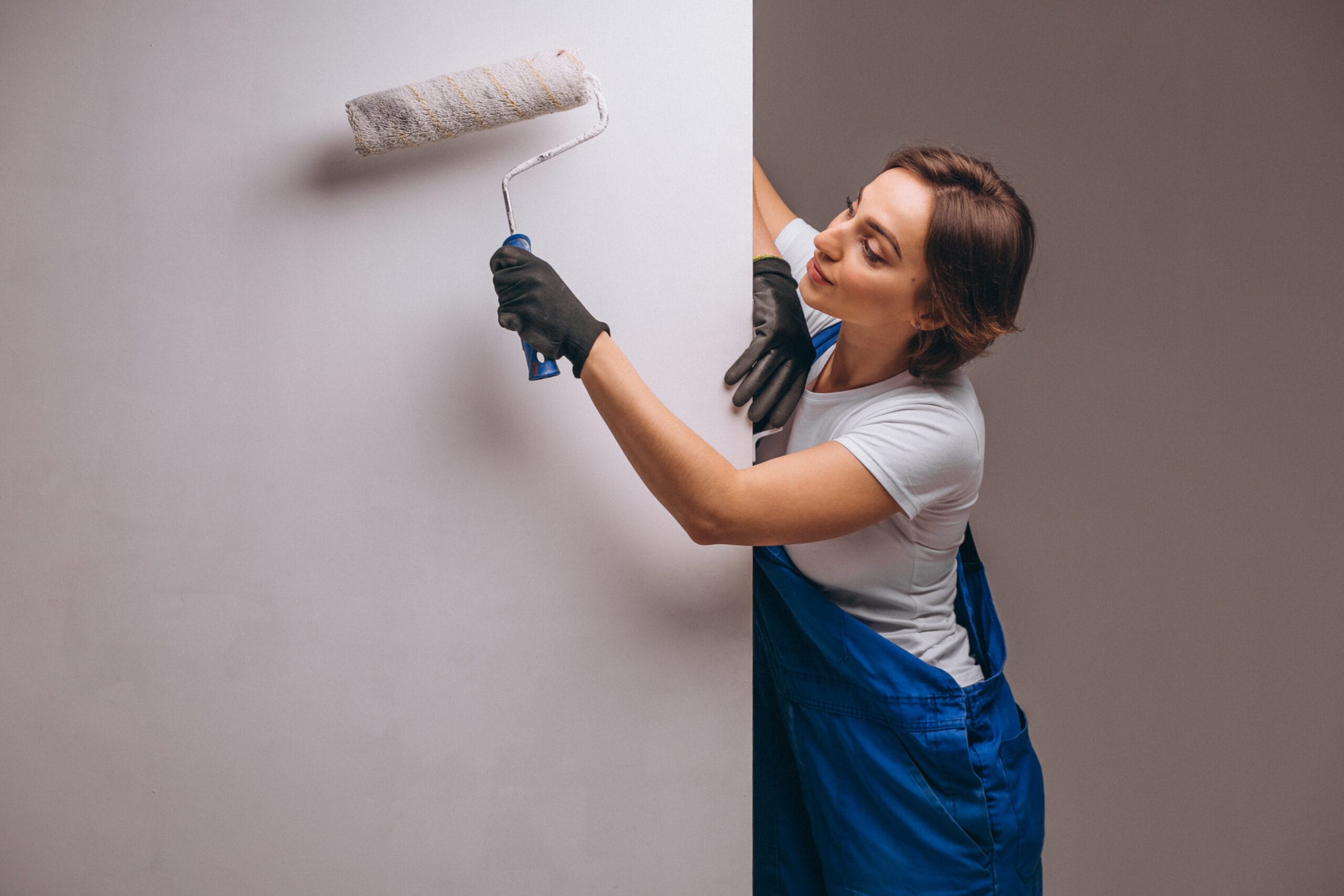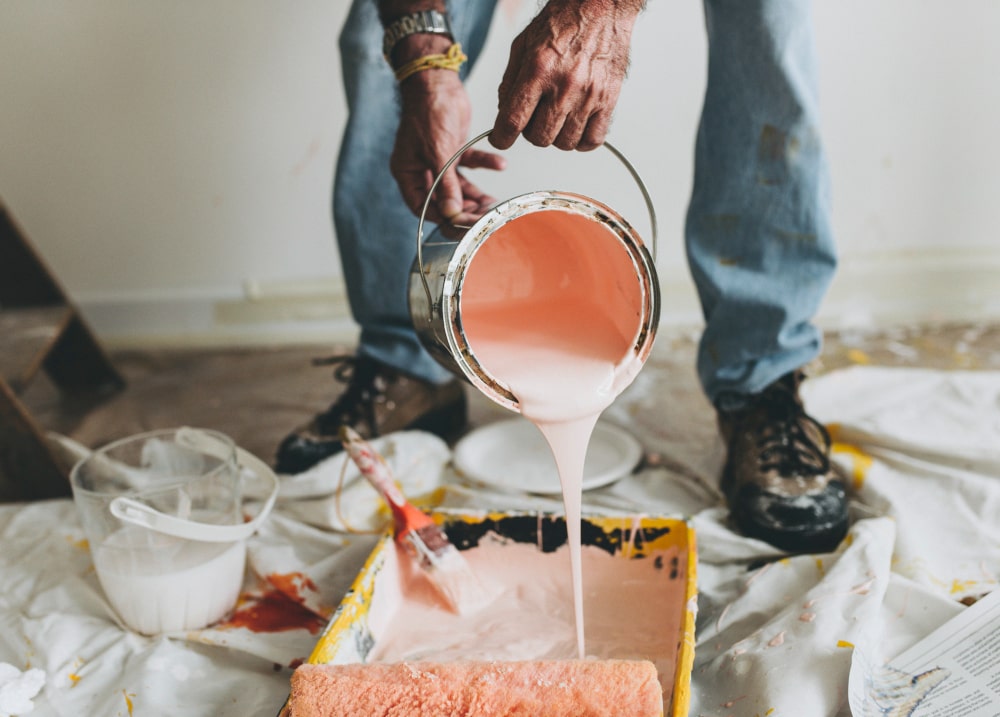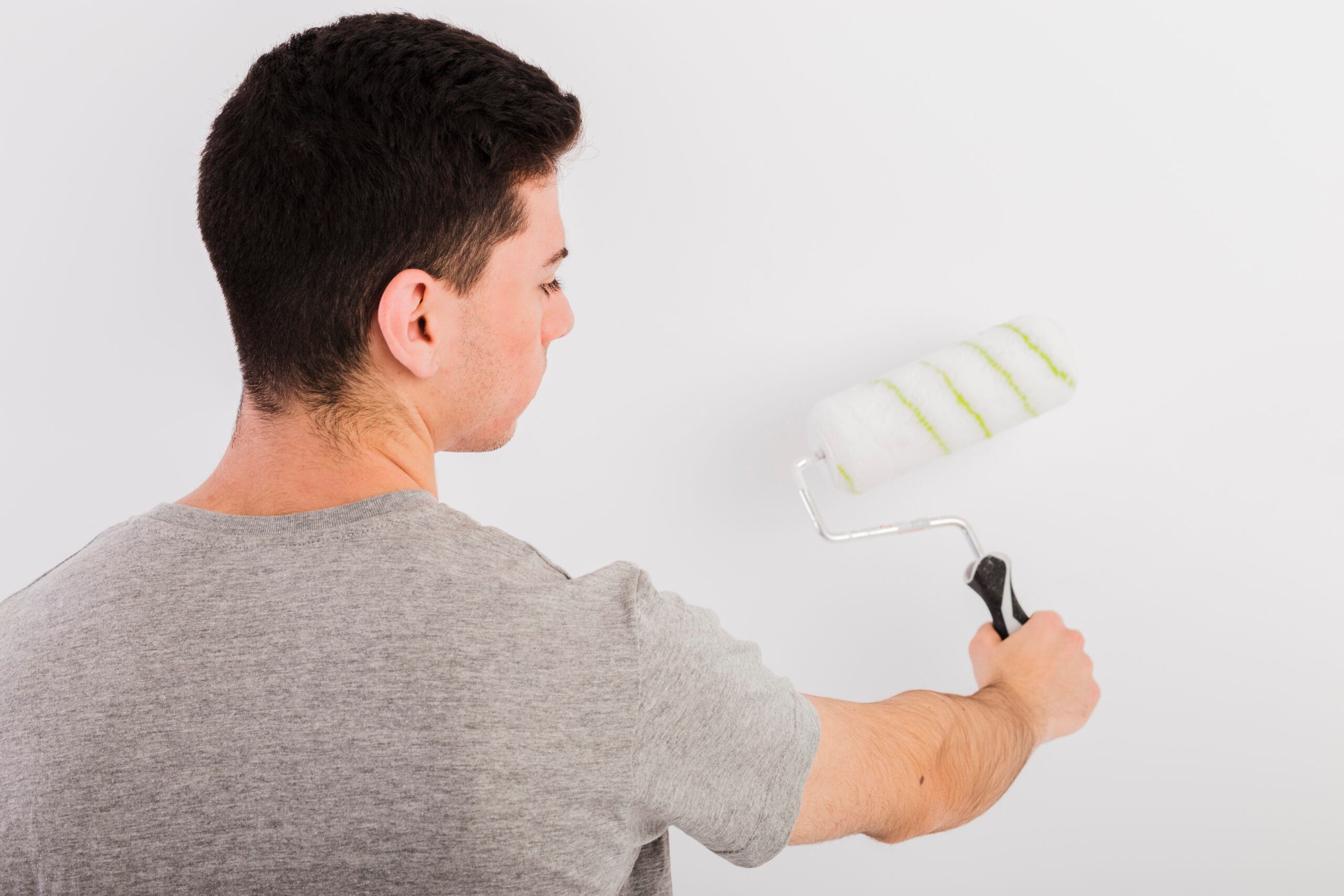
Satin vs. Matte Paint: What’s the Real Difference for Your Walls?
Choosing the right paint finish can completely change how a space feels, especially when deciding between two of the most popular options—satin and matte. These finishes may seem similar at first glance, but their differences go beyond just a subtle sheen. From how they reflect light to how well they handle wear and tear, the difference between matte and satin can make or break a room’s look and function.
Here are five key comparisons that break down the real difference in the satin vs matte debate.
Table of Contents
Key Takeaways
✔ Satin reflects light softly, while matte absorbs it for a more muted look.
✔ Satin finish paint is more durable and easier to clean than matte.
✔ Matte hides wall imperfections better than satin.
✔ Satin may highlight flaws if walls aren’t prepped well.
✔ The difference between matte and satin affects how a room feels and functions.
✔ Satin vs matte should be chosen based on lighting, room use, and design goals.
✔ Working with professionals ensures the right finish for long-lasting, beautiful results.
Satin vs Matte: 5 Key Differences
1. Light Reflection and Appearance
One of the biggest visual differences between satin and matte finishes is how they interact with light. Satin has a soft sheen that catches light, while matte absorbs it, creating a smoother, more muted look. Understanding this can help guide decisions based on how bright or subtle a space should feel.
| Aspect | Satin Finish | Matte Finish |
| Sheen Level | Satin finish paint has a soft, velvety glow that reflects light gently without being overly glossy. It adds a touch of elegance without becoming distracting. | Matte paint has no shine, offering a completely flat appearance that absorbs light. This gives walls a smooth and uniform tone. |
| Visual Texture on Walls | The light bounce from satin finish paint can highlight surface texture or imperfections. This can be useful in spaces with clean, smooth walls. | Matte paint hides imperfections better by diffusing light evenly. It’s a good choice for older walls or uneven surfaces. |
| Room Brightness Impact | Because satin reflects some light, it can make a room feel brighter, especially with natural sunlight. It works well in spaces that need a little extra glow. | Matte keeps a room feeling soft and cozy by soaking in light rather than bouncing it back. Ideal for creating a calm, moody vibe. |
✔ In this satin vs matte comparison, it’s clear that satin adds subtle brightness, while matte offers a quiet, soft finish that tones down the light.

2. Durability and Wear
When it comes to how well a paint finish holds up over time, the choice between satin and matte matters. Satin tends to be tougher and more resistant to scuffs, while matte is more prone to marks but easier to touch up. Knowing the difference between matte and satin can help determine which finish suits active households or low-traffic spaces.
| Aspect | Satin Finish | Matte Finish |
| Scuff and Scratch Resistance | Satin finish paint resists scuffs and scratches better than flat finishes. This makes it ideal for hallways, staircases, and kids’ rooms. | Matte is more delicate and can show scuffs or fingerprints, especially in high-touch areas. Still, its flat surface can hide minor scratches well. |
| Cleaning Tolerance | Satin can be cleaned frequently without fading or wearing down. A damp sponge or mild soap usually removes marks easily. | Matte paint doesn’t hold up as well to scrubbing. Excessive cleaning can wear down the surface or cause patchy spots. |
| Repainting and Touch-Ups | Touching up satin walls can be tricky because the sheen may vary if not blended correctly. New strokes might catch the light differently. | Matte paint is easy to blend when touched up, so it’s more forgiving for quick fixes or small repaints. |
✔ Satin finish paint stands out in durability and cleanability, while matte is easier to repair but better suited to gentle-use areas.
3. Surface Prep and Application
How much effort goes into painting can be just as important as the end result. Satin and matte finishes differ in how they behave during application and how well they show brush strokes or flaws. Understanding these prep needs makes a big impact in planning a project.
| Aspect | Satin Finish | Matte Finish |
| Surface Preparation | Satin requires more careful prep because its light-reflective quality highlights dents, cracks, and uneven patches. Smooth walls look best under satin. | Matte hides surface flaws better, allowing for more leniency in wall prep. It’s forgiving of slight bumps and imperfections. |
| Brush and Roller Marks | Any streaks or overlap in the application can become visible with satin finish paint. It calls for precise, even strokes to avoid shiny patches. | Matte paint absorbs light evenly and conceals roller lines well. It gives a consistent look even with minimal painting experience. |
| Drying and Recoating | Satin may take slightly longer to dry between coats, and rushing the process can lead to an uneven sheen. | Matte dries a bit faster and is easier to layer without creating glare or shine inconsistencies. |
✔ Satin vs matte shows a clear divide—satin demands more attention to detail, while matte allows for a smoother process with less worry about perfection.
4. Style and Design Flexibility
The finish of a wall can set the mood and shape the design feel of an entire room. Satin and matte each offer unique benefits for creating different atmospheres. Choosing between the two depends on whether the goal is to enhance elegance or soften the space.
| Aspect | Satin Finish | Matte Finish |
| Formality and Finish | Satin brings a slight gloss that leans more formal. It pairs well with refined, classic interiors and accents like trim, molding, and wainscoting. | Matte gives a modern, relaxed vibe. It’s often used in contemporary or minimalist designs for its understated appearance. |
| Decor Highlighting | The subtle shine of satin finish paint helps highlight wall features, such as built-ins or decorative panels. Light catches these details beautifully. | Matte keeps all attention on the color itself. It’s a good choice when design calls for calm, continuous color without reflections. |
| Pairing with Textures | Satin can enhance surrounding textures like wood or tile by contrasting with their matte surfaces. It creates a balance of depth and shine | Matte blends in with textures, supporting a cozy, soft visual flow. It won’t fight for attention with fabrics, wallpaper, or natural elements. |
✔ In this satin vs matte debate, comparisons show that satin lends a touch of elegance and shine, while matte supports a muted, cozy design without stealing the spotlight.
5. Practical Room Usage
Every room has different needs, and paint finish should match function as well as style. Some areas benefit from durability and easy maintenance, while others need comfort and visual softness. Comparing satin vs matte by room use helps guide practical decisions.
| Aspect | Satin Finish | Matte Finish |
| High-Traffic Areas | Satin finish paint works best in busy rooms like kitchens, bathrooms, and hallways. It resists wear and stands up to daily cleaning. | Matte is less ideal for high-traffic zones because it marks more easily. However, it can work in low-touch rooms with less risk of scuffs. |
| Bedrooms and Relaxation | Satin might feel too reflective in calm spaces. The slight shine can pick up light and reduce the restful atmosphere of a bedroom or reading nook. | Matte excels in quiet, restful spaces. Its flat tone helps create a warm, soft environment perfect for bedrooms, nurseries, or meditation areas. |
| Creative or Feature Walls | Satin finish adds depth when used for accent walls or focal points. It brings subtle contrast to a space when surrounded by flatter tones. | Matte keeps the attention on bold color or texture without distraction. It supports creativity without adding extra visual elements. |
✔ The difference between matte and satin becomes clear when matched with the room’s purpose—satin suits activity, while matte sets the tone for rest and focus.
How Lighting Affects the Look of Satin vs Matte Paint
Lighting can dramatically alter how a wall color appears—especially when deciding between satin and matte finishes. A shade that looks warm and smooth in one room may appear cool or uneven in another, depending on the lighting. Understanding how light interacts with different finishes is key to achieving the desired result and avoiding disappointment.
It’s no surprise, then, that interior painting was the most popular home improvement project in the U.S. in 2020, with about 35% of homeowners refreshing their indoor walls—many likely navigating these same finish and lighting considerations.
1. Natural Light Can Amplify Sheen in Satin Paint
Rooms with large windows or southern exposure will make satin finish paint look brighter and shinier. This enhanced glow may highlight wall textures or imperfections more than expected. Anyone asking “is satin paint shiny?” will likely notice an increase in sheen under strong sunlight.
2. Matte Paint Looks Consistent Across Changing Daylight
Matte paint absorbs light, giving a steady appearance even as the sun moves throughout the day. There are fewer noticeable shifts in tone or gloss, making it ideal for rooms with varied daylight. This consistency shows a clear difference between matte and satin finishes in naturally lit spaces.
3. Overhead Lighting Enhances Satin’s Reflective Surface
Recessed ceiling lights and chandeliers can make satin finish paint gleam more than intended. When positioned close to the wall, overhead fixtures can exaggerate the sheen and draw attention to bumps or uneven patches. In high-use rooms, this effect makes choosing between satin vs matte a crucial design decision.
4. Soft White Bulbs Favor Matte for a Cozy Feel
Soft white or warm LED bulbs pair well with matte finishes, helping create a calm, inviting mood. These lights reduce glare, allowing matte walls to feel soft and uniform. It’s one reason professionals often recommend matte for bedrooms, where harsh reflections from satin vs matte surfaces could feel out of place.
5. Accent Lighting Can Overwhelm Matte, But Enhance Satin
Track lights or wall sconces may cause matte finishes to look dull or flat under direct beams. Meanwhile, satin finish paint can catch this directional lighting and subtly highlight architectural details or color depth. Choosing the right pairing depends on how much attention should go to the wall itself.
6. Professional Guidance Helps Avoid Lighting Mistakes
While sample swatches help, they rarely show how satin vs matte finishes behave under real-world lighting. Paint professionals understand how color, texture, and lighting all interact—and can help answer questions like “is satin paint shiny?” based on specific room conditions. Working with experts saves time, reduces errors, and delivers a result that matches the design vision.
Mixing Satin and Matte Finishes in One Room

Painting a room costs homeowners an investment that can go even further with thoughtful design choices. One such choice is combining paint finishes within a space to add depth, highlight architectural features, and achieve a polished, designer look.
This trend is especially relevant in regions like the United States, which is leading the Global House Painting Service Market. With the right balance and guidance, these finishes can complement each other beautifully.
1. Use Satin on Trim, Matte on Walls for Balanced Contrast
Pairing satin finish paint on baseboards, doorframes, and crown molding with matte walls creates a clean visual separation. The satin’s soft sheen draws the eye to the edges and gives the room structure. This combination highlights the difference between matte and satin in a subtle but effective way.
2. Highlight an Accent Wall with Satin Against Matte Surroundings
An accent wall painted in satin adds a slight glow that helps it stand out without overwhelming the room. Matte on the other walls keeps the focus contained and softens the surrounding space. This setup showcases the satin vs matte contrast while anchoring a design focal point.
3. Use Matte on Ceilings to Minimize Light Reflection
Ceilings benefit from a matte finish because it reduces glare from overhead lighting and hides imperfections. A satin finish paint on nearby walls provides contrast and creates a gentle shift in surface texture. Professionals often recommend this setup to balance practicality with aesthetics.
4. Mix Finishes Within Architectural Features
For rooms with wainscoting, paneling, or built-ins, using satin finish paint on the lower panels and matte above adds visual interest. The slight shine of satin draws attention to craftsmanship, while the matte finish keeps the space grounded. This layered look demonstrates a refined understanding of the difference between matte and satin.
5. Matte Walls with Satin Doors Enhance Depth and Flow
Painting doors in satin while keeping the surrounding walls matte helps define transitions between spaces. The sheen makes doors more durable and easier to clean, while matte keeps wall surfaces calm and consistent. In busy homes, this satin vs matte pairing is both practical and stylish.
6. Consult a Professional to Get the Balance Right
Mixing finishes requires a trained eye to avoid jarring contrasts or uneven results. Professionals know how different sheens behave in varied lighting and how to pair them with specific colors and surfaces. Their insight ensures the result feels intentional—and helps answer key questions like “is satin paint shiny?” before it becomes a surprise.
Frequently Asked Questions
Can satin or matte paint be used on furniture?
Yes, both satin and matte paints can be used on furniture, but they produce very different results. Satin finish paint offers a light sheen that holds up well to handling, making it a good choice for cabinets, dressers, or chairs. Matte paint gives a soft, chalky look but is more prone to marks and harder to clean. When comparing satin vs matte for furniture, satin is the more durable and functional option.
Which paint finish is more pet-friendly—satin or matte?
For homes with pets, satin is usually the safer bet due to its resistance to scratches, fur, and stains. Satin finish paint is easier to wipe down when muddy paws or accidental messes hit the wall. Matte finishes may absorb dirt and oils, making cleanup more difficult over time. This practical difference between matte and satin can help pet owners choose wisely.
Does paint color affect how satin and matte finishes look?
Yes, the same paint color can appear quite different depending on the finish. Satin finish paint can make colors seem richer or deeper because of the way it reflects light, especially in darker shades. Matte tones down bright or bold colors, making them appear more muted and flat. This adds another layer to the satin vs matte decision, especially when working with vibrant palettes.
Can satin or matte paint be used in rental properties?
In rental units, satin is often favored for its durability and ease of cleaning between tenants. Satin finish paint holds up well to repeated wiping, making it ideal for frequently touched surfaces. Matte may offer a clean look initially but requires more frequent touch-ups if walls get scuffed. When weighing satin vs matte, landlords typically choose satin for practical upkeep.
Is there a cost difference between satin and matte paint?
Yes, satin paint generally costs slightly more due to its formulation and added sheen. The higher price reflects its increased durability and more refined appearance. Matte paint tends to be a little cheaper per gallon, but costs can rise with more frequent touch-ups. Understanding this cost-related difference between matte and satin helps with budgeting larger projects.

Refresh Your Walls with Prospect House Painting Pros!
Bring new life to your home with the expert touch of Prospect House Painting Pros. Whether it’s updating faded walls with a clean matte finish or adding dimension with a smooth satin finish, our experienced team in Prospect, CT, delivers crisp lines, flawless coverage, and long-lasting results. We work with care, respect your space, and help choose the best look based on lighting, traffic, and personal style.
For a finish that feels just right, count on local pros who know what works.
